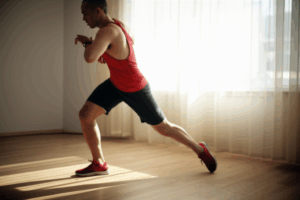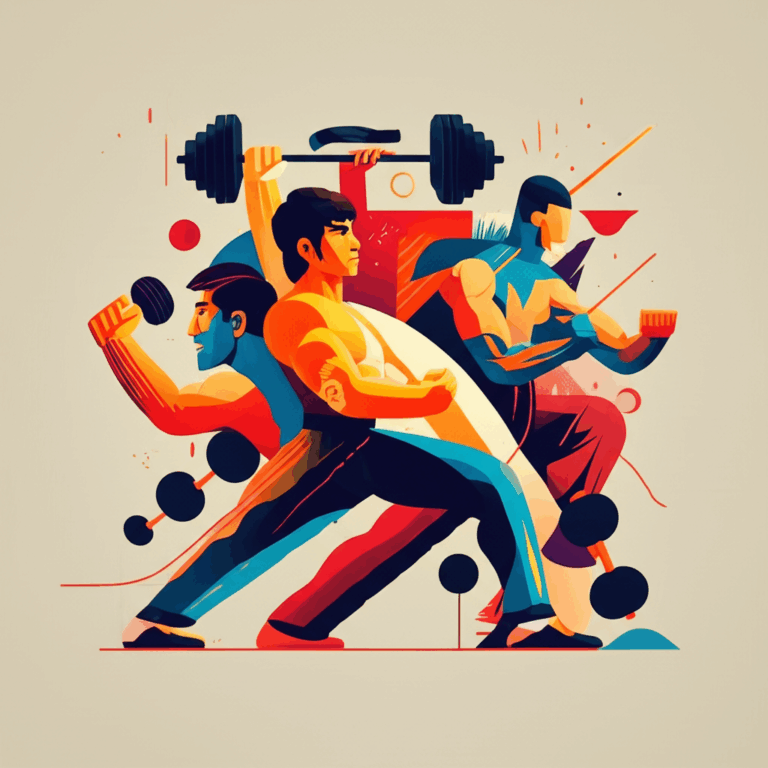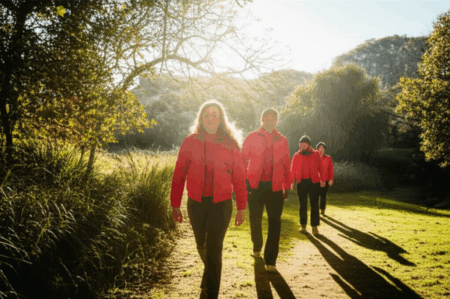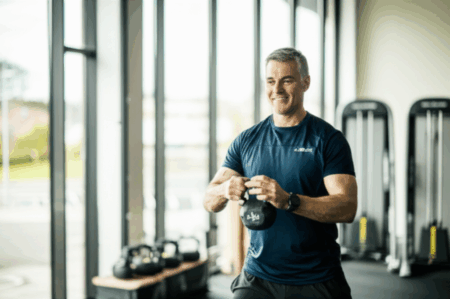Bruce Lee, the iconic martial artist and actor, continues to inspire millions with his dedication to physical fitness and martial arts excellence. Recently, a resurfaced image of his 1965 workout routine from the Hak Keung Gymnasium in Hong Kong has gone viral, sparking discussions about his training methods and their effectiveness. This article delves into the details of this routine, Lee’s broader training philosophy, and why he didn’t always focus on heavy lifting.
Unpacking the Viral 1965 Workout Routine
The 1965 workout routine, documented on a gym card, provides a snapshot into Lee’s early training regimen. It’s important to remember that this was just one part of his comprehensive approach to fitness.
The Routine:
- Squat: 3 sets of 10 reps with 95 lbs (43kg)
- French Press: 4 sets of 6 reps with 64 lbs (29kg)
- Incline Curls: 4 sets of 6 reps with 35 lbs (16kg)
- French Press (again): 4 sets of 6 reps with 64 lbs (29kg)
- Con Curl: 3 sets of 10 reps with 70-80 lbs (32-36kg)
- Two-Handed Curl: 3 sets of 8 reps with 70-80 lbs (32-36kg)
Additional Exercises Mentioned:
- Push-ups (weighted, between 70 and 80 pounds)
- Tricep stretches
- Dumbbell circles
- Reverse curls
- Wrist curls
- Sit-ups
- Calf raises
Initial Reactions:
Some observers have described the routine as basic or a mere warm-up, while others suggest that it aligns with Lee’s focus on agility and functional strength for martial arts. Considering Lee’s height of 172 cm and weight of 64 kg, the weights may have been adequate for his needs at the time.
Bruce Lee’s Broader Training Philosophy
Lee’s approach to physical training was multifaceted, constantly evolving, and tailored to enhance his martial arts skills. He experimented with various fitness modalities, including:
- Barbell Training: Lee incorporated barbell exercises to build strength and power.
- Isometrics: He used isometric exercises to improve strength at specific angles.
- Plyometrics: Plyometric exercises helped develop explosive power.
- Circuit Training: Lee favored circuit training to keep his blood circulating throughout his body.
- Running: He ran three days a week, often using a “fartlek” approach (alternating pace, like HIIT).
- Stretching: Flexibility was a key component, with daily stretching routines.
His training was not just about lifting weights, but about developing a complete range of physical attributes essential for martial arts, including strength, power, speed, endurance, and flexibility.
Why Not Heavy Lifting? Functional Strength and Martial Arts
While Lee did incorporate weightlifting into his regimen, he wasn’t primarily focused on bulking up or lifting the heaviest weights possible. His emphasis was on functional strength, which directly translated to improved performance in martial arts.
Key Reasons for Avoiding Excessive Heavy Lifting:
- Speed and Agility: Lee prioritized speed and agility, which are crucial in martial arts. Excessive muscle mass can sometimes hinder these attributes.
- Endurance: His training needed to support prolonged martial arts activity, requiring a balance between strength and endurance.
- Harmonious Development: Lee sought harmony between muscle groups, ensuring that strength gains complemented his martial arts movements.
- Preventing Injury: Lee was once hospitalized for six months due to a weightlifting injury, reinforcing the importance of training that supported his martial arts, not detracted from it.
The Evolution of Lee’s Workout Routines
Lee’s training evolved over time as he gained knowledge and refined his approach.
Early Routines (like the 1965 plan):
- Showed a bodybuilding style of approach, focused on building hypertrophy.
- Consisted of moderate intensity and higher reps.
- Aimed to strengthen muscles.
Later Routines:
- Full-body workouts incorporating compound movements.
- Low volume.
- Emphasized velocity and explosive movements.
- Focused on functional movements.
Components of Bruce Lee’s Comprehensive Workout
Bruce Lee’s comprehensive workout consisted of several components that made him the martial art legend that he was.
Weightlifting:
- Lee utilized free weights (dumbbells and barbells) at the gym to build muscle mass and enhance muscle strength.
- Barbell Clean and Press: 2 sets x 8 reps.
- Barbell Squat: 2 sets x 12 reps.
- Barbell Pullover: 2 sets x 8 reps.
- Barbell Bench Press: 2 sets x 6 reps.
- Barbell Good Morning: 2 sets x 8 reps.
- Barbell Curl: 2 sets x 8 reps.
Core Training:
- Lee focused on body-weight exercises such as sit-ups, push-ups, leg raises, side bends, dragon flags, and planks to develop core strength.
- Sit-ups: 4 sets of 20
- Side bend: 4 sets of 15 to 20. Lee would hold dumbbells in his hands to increase the intensity of this movement.
- Leg raises: 4 sets of 20
- Twists: 4 sets of 50.
- Frog kicks: 4 sets of 20. Lee performed this exercise by hanging from a pull-up bar and raising his knees up to touch his chest.
Flexibility Exercises:
Stretching was an integral part of his warm-up routine to improve flexibility.
- Full-body stretch: 5 times, maintaining stretch 3 seconds, rest 2 seconds.
- Arch back: 5 times.
- Leg tensing: 12 times, 3 seconds tensing, 2 seconds rest.
- Abdominal tensing: 10 times, 3 seconds tensing, 2 seconds rest.
- Sit-up, touch toes: 5 times.
- Bent-leg raises: 5 times.
Cardio Exercises:
- Lee incorporated various cardio activities, including jogging, jumping rope, and cycling, to enhance endurance.
- Running Intervals:
- Light Jog for 3 minutes.
- Interval 1- Run @65% for 3 minutes.
- Rest- light jog for 2 minutes.
- Interval 2- Run @75% for 3 minutes.
- Rest- light jog for 2 minutes.
- Interval 3- Run @65% for 3 minutes.
- Cooldown- light Jog for 2 minutes.
Martial Arts Training:
- Practiced his martial arts techniques daily, typically alternating between upper and lower body drills.
- He’d alternate days where he’d work on combative leg moves with days he’d focus on arms and hands.
- He often aimed to do 500 punches a day and threw some of these punches while holding light weights.
- He’d focus on speed and endurance with his kicking and punching sessions, but would also train power by incorporating work with a heavy bag.
Forearm Exercises:
- Lee emphasized forearm strength with traditional wrist curls and specialized gripping machines.
Bruce Lee’s Training Principles
Several core principles underpinned Lee’s approach to training:
- Specificity: Training should directly enhance martial arts skills.
- Intensity: He manipulated variables like rest, reps to failure, and tempo to create intensity.
- Progressive Overload: He aimed to continually challenge his body by adding weight, increasing repetitions, or reducing workout time.
- Velocity: Lee prioritized speed and power, incorporating explosive movements into his weight training.
- Mind-Body Connection: Shadow boxing, visualization, and mental focus were integral to his training.
Replicating Lee’s Training: Considerations
While many are inspired to emulate Lee’s training, it’s crucial to consider his background and dedication. He was a “super athlete” who trained intensely for decades. It’s essential to scale any routine to one’s own fitness level and goals to avoid injury.
The Lasting Legacy of Bruce Lee’s Fitness
Bruce Lee’s physique and martial arts prowess remain iconic. His innovative and comprehensive training methods set new standards for martial artists and fitness enthusiasts alike. By understanding his principles and approach, individuals can draw inspiration and adapt his methods to their own fitness journeys. While the 1965 workout provides a glimpse into his early training, it’s just one piece of the puzzle that made Bruce Lee a legend.







